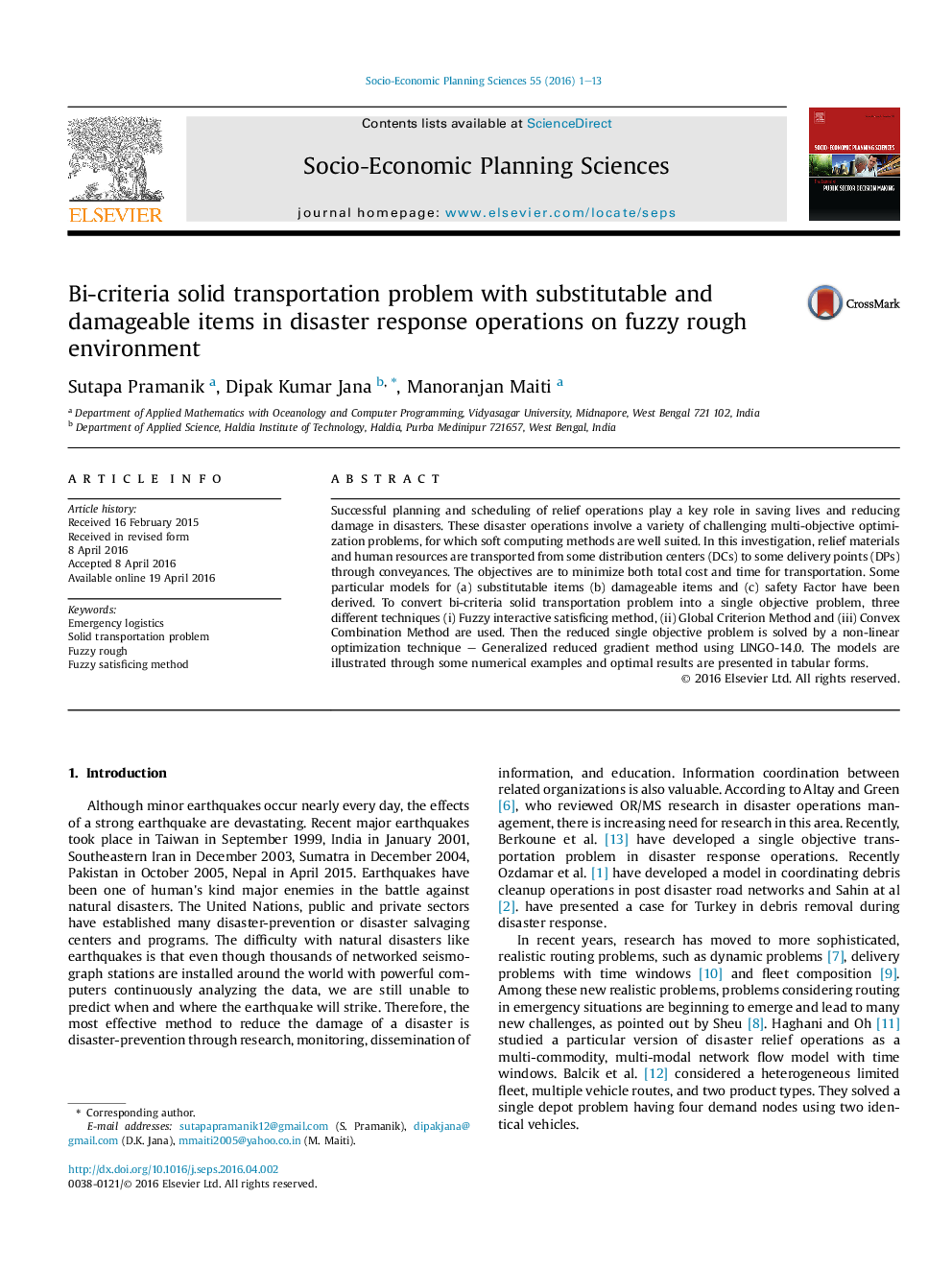| Article ID | Journal | Published Year | Pages | File Type |
|---|---|---|---|---|
| 987790 | Socio-Economic Planning Sciences | 2016 | 13 Pages |
•Bi-objective fuzzy rough expected value models has been developed and solved.•Some particulars models (substitute, damageable, safety factor) have been derived from the proposed model.•Multi-objective problems have been converted into single objective using three different methods.•Reduced crisp problem has been solved using soft computing technique GRG.
Successful planning and scheduling of relief operations play a key role in saving lives and reducing damage in disasters. These disaster operations involve a variety of challenging multi-objective optimization problems, for which soft computing methods are well suited. In this investigation, relief materials and human resources are transported from some distribution centers (DCs) to some delivery points (DPs) through conveyances. The objectives are to minimize both total cost and time for transportation. Some particular models for (a) substitutable items (b) damageable items and (c) safety Factor have been derived. To convert bi-criteria solid transportation problem into a single objective problem, three different techniques (i) Fuzzy interactive satisficing method, (ii) Global Criterion Method and (iii) Convex Combination Method are used. Then the reduced single objective problem is solved by a non-linear optimization technique – Generalized reduced gradient method using LINGO-14.0. The models are illustrated through some numerical examples and optimal results are presented in tabular forms.
